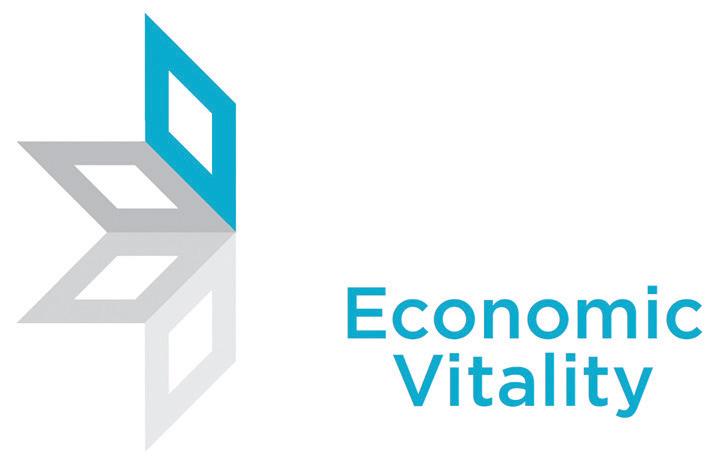High road techniques: stress the need to make more efficient use of resources and invest in processes, technological innovation, and employee skills. Labor is viewed as an important commodity and skill enhancement as a crucial, targeted investment. This entails the mobilization and upgrading of local resources and the maximization of local strengths and advantages to balance relatively higher wage rates. Indicators: Proxy measures to provide operational definitions to the multidimensional components of LED. Indicators are expected to serve the function of defining policy problems and informing policy formulation. They should provide a basis for policy discussion and planning. Indigenous businesses: Local businesses, usually those that have developed in the community. Increasingly, the term refers to all businesses in an area whether they are “locally grown” or not. Industry cluster: A grouping of related industries and institutions in an area or region. The industries are inter-linked and connected in many different ways. Some industries in the cluster will be suppliers to others; some will be buyers from others; some will share labor or resources. The important thing about a cluster is that the industries within the cluster are economically linked; they both collaborate and compete and are, to some degree, dependent upon each other; and, ideally, they take advantage of synergies. Informal sector: Not within a formal or legal sector and, therefore, not raised and not provided with services. Not able to use assets as collateral for new productive investment. Labor market information: The body of data available on a particular labor market, including employment and unemployment statistics, occupational statistics, and average hours and earnings data.
SMEs: Acronym for “small and medium-sized enterprises.” There is no definitive delineation between a small and medium-sized business. As a general reference, small is often from five to 20 employees, medium from 20 up to 200. Businesses with fewer than five employees are usually called micro-enterprises. This is a guide only. Stakeholders: Individuals and groups who have an interest in the issues at hand. They normally represent their own interests as stakeholders. Supply chains: The products and processes that are essential to the production of a good or service. For example, to produce frozen fish, the supply chain inputs will extend from fish catching, handling, processing, and freezing to packaging, storing, and distribution. These are all elements of a supply chain. Integrated LED strategies will try and capture as much as possible of the higher value end of the value chain in their area. In this case, fish processing, packaging, storing, and distribution will add value and, therefore, be seen at the higher end of the value chain.
TRAVEL AND TOURISM TERMS The travel and tourism industry has its own language and terminology. Terms such as ecotourism, carrying capacity, and market segmentation are common and are used by a variety of players in the local tourism industry. In recognizing that some of these terms are not universally understood, the following provides an understanding of this terminology by describing the more commonly used words and acronyms.
Local economic forum: A coordinating mechanism set up to achieve the streamlining and improvement of local economic service delivery.
Accommodation capacity: The measure of accommodation stock at a defined destination. May be given by various measures: e.g., number of establishments, number of main units within an establishment (e.g., rooms, caravan stances), or capacity in terms of residents (e.g., bed spaces).
Low-road techniques: promote an area economic position through the lowering of production costs, especially wage rates. This is not a sustainable approach.
Adventure tourism: A form of tourism in natural areas that incorporates an element of risk, higher levels of physical exertion, and the need for specialized skills.
Mobile manufacturing (or service sector) investment: Where manufacturing (or service) companies have a wide choice of locations. Consequently, they are in very strong negotiating positions when it comes to choosing where to locate their businesses.
All-inclusive: A form of holiday package where the majority of services offered at the destination are included in the price paid prior to departure (e.g., refreshments, excursions, amenities, gratuities, etc.).
One-stop business service centers: Facilities where business owners can go to obtain advice and support to help them establish and expand their businesses. Sometimes these centers also issue licenses and permits needed by businesses to start up, operate, or expand. These centers improve the local business environment by reducing the number of separate agencies and offices a business may need to approach for advice or to apply for various licenses and permits. They save public and private time and improve efficiency as a result. Soft infrastructure: relates to the less tangible aspects of LED, such as education and training provision; quality of life infrastructure, such as park, leisure and library services; housing; business support; business networking; and financing services.
Attraction: Any visitor service or product that tourists would enjoy visiting or using. An attraction may not be an “attractor” but can still be an attraction. To be considered an attraction, a product must be findable (clearly located on maps and street addresses, and directions provided). If tourists can’t find the facility, it is not a tourist attraction. Attractor: A significant tourist attraction, which compels visitation. The primary “must see” attractions in an area. The top reasons a tourist would choose to visit this area.
GLOSSARY OF TERMS | 65








